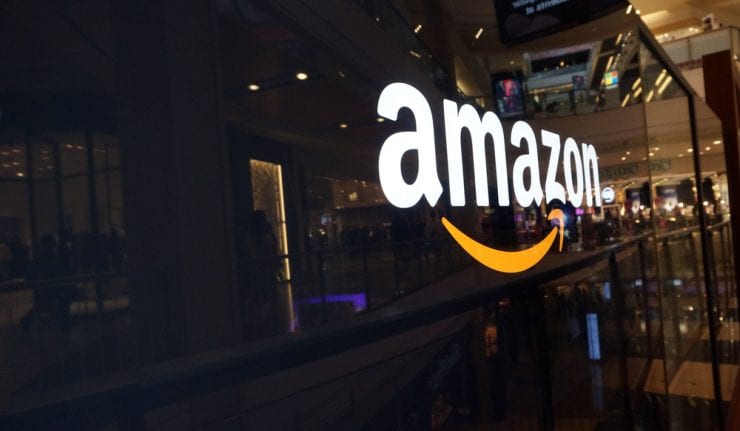You would have missed it yesterday if you aren’t laser-focused on the U.S. retail landscape. After all, it’s hard to spot a small-cap opportunity in the shadow of mighty Amazon.com Inc. (NASDAQ:AMZN).
But my GameChangers subscribers were primed to hear that At Home Group Inc. (NYSE:HOME) is fielding acquisition bids from Kohl’s Corp. (NYSE:KSS). My subscribers already have racked up a big score on HOME and they can see this dynamic home decor chain even in the shadow of Amazon.
And even though reports that Kohl’s is interested in a deal barely moved HOME’s market cap of $60 million, shareholders still did twice as well here yesterday as they did on Amazon. Indeed, small can be good under the right circumstances, but a lot of investors are missing these stories because the Jeff Bezos behemoth has gotten so big that it’s hard to see what’s really going on elsewhere in the consumer economy.
A Distorted Sense of Scale
People who spend all day in front of a screen sometimes forget what’s going on in the real economy. Admittedly, electronic commerce remains the most dynamic slice of the retail universe and an investor who wants pure exposure really only has three options.
You can go with Amazon, the giant that now dominates half of the online market and is still growing its presence a healthy 25 percent a year. Contrarians can pursue niches with eBay Inc. (NASDAQ:EBAY) or the much smaller Etsy Inc. (NASDAQ:ETSY) and Overstock.com Inc. (NASDAQ:OSTK). Between them, these stocks maybe control 8 percent of digital retail.
The third option is to skip the stores entirely and focus on the technology companies that build the online shopping carts and support the credit card transactions. That’s PayPal Holdings Inc. (NASDAQ:PYPL) and upstart Shopify Inc. (NYSE:SHOP).
But that’s not really a choice. Amazon is increasingly less about a company that sells its own inventory and more of creating a marketplace for entrepreneurial third parties to exploit. A full 65 percent of all retail dollars on the Amazon platform and 85 percent of the growth came from these third parties last year. Direct sales already are a small piece of the overall footprint and getting smaller every day.
Meanwhile, conventional brick-and-mortar stores remain the center of the consumer universe, generating 16 times as much economic activity as Amazon last year. Walmart Inc. (NYSE:WMT) still dominates that world but it doesn’t even account for 10 percent of that admittedly fragmented landscape.
And while e-commerce is cannibalizing a lot of sales from physical stores, there still are plenty of dollars to go around. Last year, another $63 billion in retail activity shifted online. That growth in online sales is okay. Even slow net growth translated into $142 billion extra for brick-and-mortar retailers to share last year.
With $142 million in additional revenue flowing into the sector last year, it’s hard to make a case for retail stagnation. It is enough to create half an Amazon from scratch in a single year. At current valuations, half of Amazon is easily $450 billion in market capitalization.
Wall Street, Main Street, Electronic Street
What’s striking is that Amazon is so popular on Wall Street and so richly valued that it distorts the market’s view of where retail dollars really go.
Amazon generates just as much profit as Walmart, which now has reached a phase where it takes a vast amount of growth to move the fundamental needle. As a result, WMT has barely 30 percent of the Wall Street footprint as its electronic archrival.
It doesn’t have to make sense. Amazon simply rates a huge premium as the category-killing company that terrifies a lot of retail investors. Walmart, on the other hand, is seen as friendly and reliable, the status quo that disruptors are eager to divide and conquer.
For me, however, even that battle of the giants misses the real story and the real opportunity in retail today. Amazon and Walmart between them are barely 15 percent of all U.S. retail.
There’s easily $3 trillion a year left for everyone else to fight over. Even at miserable 2 percent margins, that’s $60 billion a year in theoretical profit.
Companies capturing part of that market from rivals will grow faster and deserve valuations closer to Amazon. The rest compare more closely to Walmart.
Wall Street doesn’t see a lot of the winners. A lot of public retail stocks are the entrenched department store chains and mall outlets that are truly vulnerable to more nimble competitors.
Look at a Wall Street list and you’d think all American consumers shop at Amazon, Home Depot Inc. (NYSE:HD) and Walmart exclusively, with a thin veneer of activity at Lowe’s Companies Inc. (NYSE:LOW), Target Corp. (NYSE:TGT), TJX Companies Inc. (NYSE:TJX) and Costco Wholesale Corp. (NASDAQ:COST).
That’s it. No other retail stock rates even 3 percent of the big consumer portfolios, which are weighted by market capitalization and not market share.
As a result, dozens of day-to-day retailers in modern American life get ignored. They’re often dynamic companies like HOME and other retail stocks that have made us money in GameChangers.
There are weak links in that food chain as well. The department stores are missing. The drugstores are missing. They’re out of favor on Wall Street, so they just don’t have the market heft to show up on the lists.
Some people say they’re doomed. After hearing that story for years, I’m less and less convinced. As long as companies like Kohl’s keep trying to reinvent themselves, they have a fighting chance.
Buying vibrant new concepts like HOME is the first step. The department stores need big box scale to survive in the modern retail environment.
If they can buy or build a platform that captures a share of that $142 billion brick-and-mortar growth opportunity, traditional retail business models will have a place on Wall Street, even if Amazon’s shadow deepens.
In the meantime, my subscribers keep making money on the winners that are too small to hit most investors’ screens but too dynamic to ignore. Who said retail was dead?




![[instant messaging via tablets and phones]](https://www.stockinvestor.com/wp-content/uploads/shutterstock_125411345.jpg)